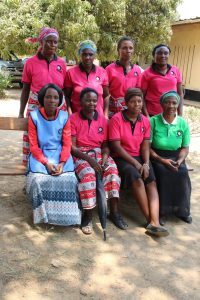
Zambia’s Life-Saving Lullabies harness the power of song in local languages to spread vital healthcare messages, including Covid-19 precautions, among African women.
The project, which has received funding from Britain’s Arts and Humanities Research Council (AHRC), is currently focusing on Zambia, but could spread to other African countries and then around the world, as a zero-cost way to create awareness of key health issues. Carnegie Hall in New York has already invited the Life Saving Lullabies team to take part in a two-day workshop in June as part of their review of their own Lullaby Project. They have also received an invitation from the Spanish organization Grandes Oyentes to take part in an online discussion on the impact of music and creative engagement on women’s health to help plan the introduction of a lullaby project in Spain.
It works by encouraging volunteers to create lively lullabies in their local languages that they then perform to women who visit maternity clinics. The songs are a memorable way to convey important information about birth and childcare, but the onset of coronavirus now means that songs are now being created that relay the importance of precautions, such as social distancing.
More than 70 different languages and dialects spoken in Zambia, where the official language is English. Bemba and Nyanja are the two most widely spoken local languages. Nyanja is the official language of the police and also spoken in neighboring Zimbabwe, Malaw,i and Mozambique. Tonga is spoken by about 11% of the population, and other major languages include Lozi (about 500,000 speakers), Tumbuka (about 400,000), Nsenga (about 300,000), Lunda (about 200,000), and Luvale (also about 200,000). Luyana, Mambwe-Lungu, Mashi, Mbunda, Nkoya-Mbwela, Luchazi, and Nyika make up the rest of Zambia’s main languages.
The AHRC is helping St John Zambia, a leading healthcare provider, finance the project, with the input of educationalist Dr James Reid and the historian Professor Barry Doyle at the UK’s University of Huddersfield, and design expert Professor David Swann of Sheffield Hallam University, who commented, “These women are so talented. They have gone away and written songs and performed them to local women and it’s having an effect.”
Life Saving Lullabies was the result of a “eureka moment” as described by Reid: “We were at St John Zambia for a workshop talking to women volunteers about their own experience of motherhood. Then they started to sing and we looked at each other and went ‘that’s it’!”
Earlier, Dr Reid had been to New York, where the famous venue Carnegie Hall is the base for a Lullaby Project, which uses especially composed songs to develop attachment and aid child development. Observing this scheme made him realize the potential of lullabies in Zambia, where it is common for women to sing to their children and as part of church worship.
Now, the project is underway and volunteers in Zambian clinics, after being told what information the Ministry of Health needs to impart, have been creating and performing songs. They can be seen and heard online and researchers will gauge their impact.
Listen to one of the lullabies created from this project:https://youtu.be/oSs9vuKoiDE







